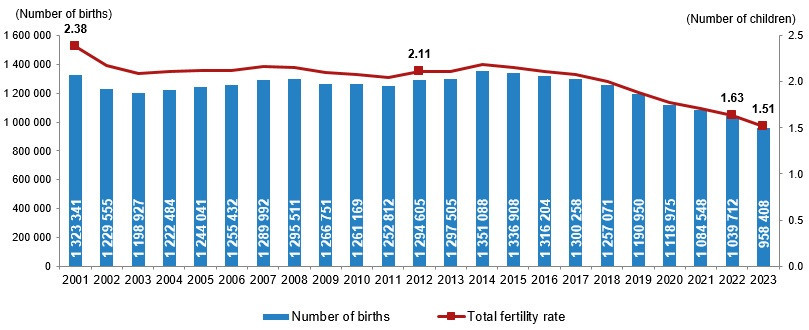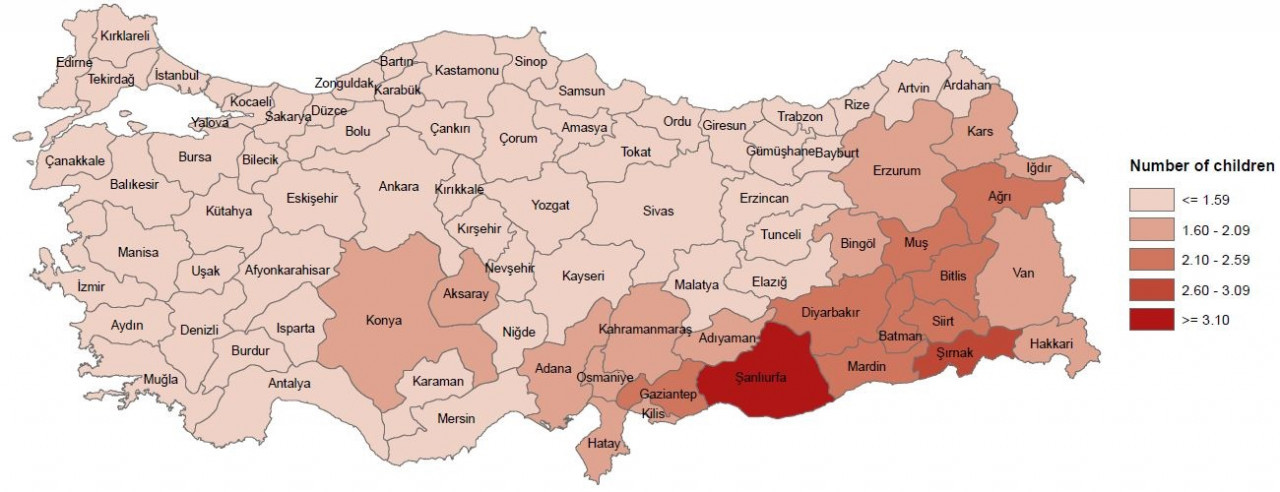Turkey's fertility rate drops to 1.5, below replacement level
The fertility rate in Turkey fell to a historic low of 1.51 and remained below the replacement level fertility of 2.1 in 2023, according to official data from TÜİK.
Duvar English
In 2023, the number of live births in Turkey was 958,408, according to the official data from the Turkish Statistically Institute. Of these, 51.3% were boys and 48.7% were girls.
The total fertility rate, representing the average number of live births that a woman would have assuming she survived through her reproductive years (typically defined as ages 15-49), has decreased to 1.51.
Total fertility rate was 2.38 children in 2001, which was above the population's replacement level of 2.10.

This means that Turkey’s fertility has dropped below the level necessary for population replacement from one generation to the next.
The province with the highest total fertility rate was southeastern Şanlıurfa with 3.27 children. This province was followed by eastern Şırnak with 2.72 children and southeastern Mardin with 2.40 children.
Bartın province in the Black Sea had the lowest total fertility rate with 1.13 children. It was followed by Zonguldak and Karabük provinces in the Black Sea with 1.14 children and Aegean Kütahya with 1.16 children.

In 2022, the average total fertility rate of 27 European Union member countries was 1.46 children.
When examining the fertility rate by age group, it was observed that in 2001, the highest age-specific fertility rate was in the 20-24 age group at 144 per thousand, whereas in 2023, this rate shifted to the 25-29 age group at 101 per thousand. This indicates a trend towards fertility occurring at a later age for women.
As a positive yet insufficient development, adolescent fertility rate decreased to 11 per thousand in 2023 while this was 49 per thousand in 2001.
Adolescent fertility is defined as “the average number of live births per thousand women in 15-19 age group.” Reducing fertility these levels in developing countries has been indeed one of the United Nations' Millennium Development Goals.
The average adolescent fertility rate for EU member countries was 7 per thousand in 2022.

 Turkey's fertility rate falling, top statistical authority revealsHealth
Turkey's fertility rate falling, top statistical authority revealsHealth